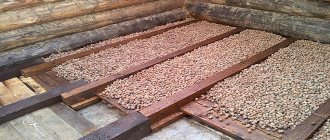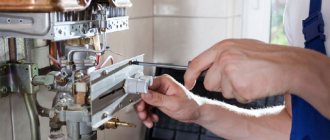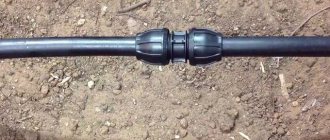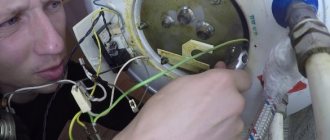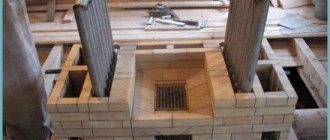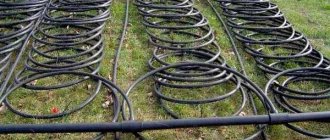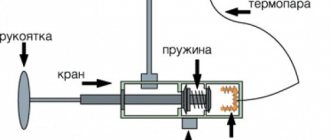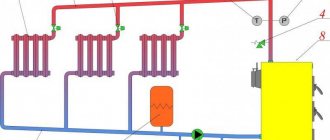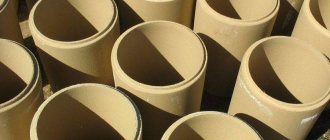How often should you clean your air conditioner?
The need for sanitization and mechanical cleaning of the air conditioner depends on the location of the device, the purpose of the room and its operating conditions.
There are recommended standards for how often you should replace the filter and clean individual elements:
- It is recommended to clean household systems for home use at least once every 6 months, and equipment installed in a children's room - at least once every 3 months;
- systems for office work - at least once a quarter;
- systems for work in public institutions - monthly.
The need for prevention can be identified when an unpleasant odor appears when the device is in operating mode. The smell signals the accumulation of colonies of pathogenic bacteria, mold and mildew in the filter elements and other mechanisms. As a result, air saturated with harmful spores and microbes enters the room, which indicates the need for urgent cleaning of the device.
Most home air conditioning maintenance work can be done independently, but to charge the equipment with freon, you will need to hire specialists.
Does it need to be cleaned after winter?
The end of the air conditioning operating season occurs in the fall, when this device is used to heat the apartment before connecting the central heating. At low outside temperatures, the external unit of the air conditioner is not able to ensure the normal functioning of the device, and there is no need to use it - conventional heating or oil heaters are sufficient.
Winter is a time when the air conditioner is inactive, so after the winter season you should start servicing and cleaning the device, even if refilling is not required.
Small insects accumulate inside the condensate drainage system, looking for shelter with the onset of cold weather. The decomposition of organic matter in filters is accompanied by an increase in the number of bacterial colonies, which cause allergic reactions in the body. Therefore, cleaning split systems after winter downtime is necessary.
Charging freon into the air conditioner
In the initial state, while the air conditioner is in its original packaging, freon is in the external unit. There are taps on the inlet and outlet pipes that are tightly closed. When putting the products into operation, the already assembled blocks and communications from the copper tube are freed from the oxygen present there. This is done through a special branching of the inlet pipe of the external unit of the air conditioner. The manifold is connected here, and the vacuum pump is connected to it.
Not all equipment is compatible. Freons are different not only in refrigerators, but also in split systems. A manifold is needed for the type of refrigerant used; it will be needed to assess the adequacy of the charge. Note that most instrument dials combine two or more types of freons. The dependencies are linear; for this reason, the difficulty lies solely in converting the angle of rotation of the arrow into a number. On the Internet there is a table of the correspondence of values (for example, boiling temperatures depending on pressure) of different refrigerants; in fact, carry out the translation, even if the manifold is not suitable.
We do not recommend doing this: there is a chance of making a mistake. An incorrect dose of freon will most likely damage the air conditioner and reduce its service life. For example, excess pressure leads to incomplete transition of the refrigerant into the gas phase. If liquid gets into the compressor, a big incident occurs. If you don’t mind the air conditioner, see how the heart of the unit will fail if the described rule is violated.
To refuel, check, and refuel the air conditioner, you must have on hand:
- A manifold with a dial, marked with the required type of freon. We assume that there are different types of equipment on sale. A manifold is required for refilling air conditioners exclusively.
Collector with dial
- A vacuum pump is necessary to free the channels from air and water vapor. It is a good idea to carry out nitriding with repeated removal of the inert gas if the system is operating at negative temperatures. This does not necessarily mean negative temperature outside. For example, when the temperature of the evaporator, even in the indoor unit, drops below zero. This measure will ensure dehydration of sealed channels, nitrogen will gain moisture. Leak detectors are configured for a specific type of gas. These are methane, nitrogen dioxide, a number of freons.
- It is appropriate to say that it is a good idea to have a leak detector in your arsenal. The pressure drop already shows a leak in the seal. A leak detection technique is required. It’s easier in refrigerators, because the device is at your fingertips, not counting the fact that you need to tear off the polyurethane foam thermal insulation from the back wall of the case to get to the copper tubes. You can’t touch anything in the air conditioners; in addition, the external unit hangs at a considerable height, as do a good part of the copper communications. This is a suitable activity for Spider-Man to climb and look for leaks on the wall with a device in his hand. It's wiser to cast suspicion on the seams. But freon can be lost at any point, including the space inside the blocks.
- Handicraftsmen skip the nitrogen cylinder. We will not say that nitriding is a 100% necessary measure. But dry gas dries the channel and removes frost.
Nitrogen cylinder
- The above applies to preparatory work. To start refueling, you will need a freon bottle. Moreover, the refrigerant is chosen that is compatible with the air conditioner; you cannot fill the device with the wrong substance, as the performance will be impaired. We will not talk about volumes, flow sections, sections of filters and valves; you need to refill in the volume and with the specific substance described in the instructions. By the way, getting a service manual is problematic. The type and quantity of freon are written on refrigerators; we would start with the nameplate, for example, of the external unit, and inspect the compressor.
- To control your weight you need scales. It is recommended to turn the cylinder over. Weight is controlled to the nearest gram. The exception is the case of refueling. Here you have to use your eye. Even if service centers have tables, ordinary customers cannot get them. A shortage or excess of freon is determined by the difference in boiling temperature (for a fixed pressure) and at the inlet of the external unit (thick pipe). If the calculated value does not comply with the standards, corrections are made. It's easier to reduce the amount of freon. To do this, part of the refrigerant is released through the manifold. When the cylinder is attached, there is air in the tube. He shouldn't get inside. The excess is released by the manifold valve.
Refilling the air conditioner
- Any thermometer is needed. But it's better with a metal contact pad. It is unlikely that you can use an outdoor thermometer to correctly measure the temperature of the thick pipe of the external unit of the air conditioner. Is it permissible to use a non-contact infrared thermometer? If you can aim accurately, and the measurement range matches the required one, then it is allowed.
It is a good idea to obtain a manual before carrying out the procedure. It describes the degree of vacuum pumping, the holding time before the subsequent procedure, and freon pressure under various conditions. Even educational films from our companies are not suitable, since they are more of an advertising nature. Some technological steps are skipped there. It is clear that in practice this cannot be done.
You need to be technically savvy to complete the job. Beginners will need to clarify the temperature difference between the freon boiling point and the value at the inlet of the thick pipe of the external unit. Recently, a review on the portal was devoted to the topic of refueling, where technological operations were described in detail. Others will say that the operating mode is not specified. Indeed, we were talking about cooling. And, of course, the air conditioner must work. But for those who do not understand this, it is not enough to simply buy equipment for refilling air conditioners. We recommend reading the literature before venturing into the wilds.
Air conditioner diagnostics
A few words about diagnostics. For example, if in cold weather the air conditioner stopped heating at all, and in the thaw, after a while it turned out that the equipment was working, it means that water got into the freon circuit. This is not critical; air conditioners do not have filter-driers. At a point below the zero mark the situation changes. The coil of the external unit, when working for heating, is colder than the environment, taking heat from it. If it’s minus 10 Celsius outside, it’s much below the freezing point of water. As a result, the functioning of the equipment will be disrupted. This will cause an intermittent, floating malfunction or will damage, for example, the mechanical part of the compressor.
When there is no sense of work in the summer, this is a sign of a freon leak, which is checked using a manifold. The device attaches to the service pipe of the external unit of the air conditioner. If it shows a value equal to atmospheric pressure, then it’s time to change the refrigerant. Or the compressor has failed. Like most modern household appliances, air conditioners are equipped with built-in self-control. The speed of troubleshooting depends on the intelligence of the system.
The text did not touch on ducted indoor units. They provide ample opportunities for creating efficient microclimate control systems. Many air conditioners can ventilate rooms.
If rain is dripping from above, then the time has come to buy a visor for the air conditioner.
What does cleaning your air conditioner do?
When cleaning the air conditioner, grease, dirt, and dust are removed from the surfaces of parts, which serve as a breeding ground for the proliferation of pathogenic bacteria, the germination of fungal spores and the formation of mold.
Removing these pollutants prevents premature wear of device parts, but most importantly, after cleaning and changing filters, dangerous microorganisms do not enter the human lungs.
What are the consequences of her absence?
Long-term lack of prevention leads to the following consequences:
- contamination interferes with the normal operation of the air conditioner, as a result of which the load on the internal operating unit increases, leading to its premature failure;
- the external unit is also subject to contamination by larger particles entering the system from the street (fluff and tree seeds). This causes ineffective cooling of the refrigerant in the heat exchanger and loss of power;
- The air in the room is not cleaned, but, on the contrary, is saturated with pathogenic microorganisms, which is why people in air-conditioned rooms are at risk of contracting various diseases.
Cleaning the drainage system
Air conditioner drainage channels clogged with dirt and dust cause them to leak. Mold appears in the pipes of the devices and fungus begins to grow. First they fall on the drain pan, and then on the radiator. This affects the cleanliness of the air in the room in which the air conditioner is installed.
Clean the drainage channels using a dishwashing brush. After which it must be treated with steam. Some modern air conditioner models are equipped with an automatic system for cleaning drainage channels and air ionization.
How to tell if your air conditioner needs cleaning
There are obvious and implicit signs by which you can determine for yourself that the time has come for air conditioning maintenance:
- leaks from the indoor unit;
- a sharp “aroma” in the house that occurs when the device is operating;
- exceeding the usual noise level during operation;
- the appearance of a crackling sound or other unusual sound;
- Unstable maintenance of the selected temperature by the device.
If at least one of the listed signs is detected, you should immediately begin cleaning the air conditioner yourself or invite specialists.
Prolonged operation of the air conditioner with internal contaminants will lead to breakdown and the need for expensive repairs. In most cases, the owner can remove and partially disassemble the device for preventive maintenance independently, following the step-by-step operating instructions for this model.
Cleaning the indoor unit
Cleaning of a home air conditioner is carried out as problems are identified, but for permanently operating units in offices or entertainment venues, preventive maintenance should be carried out monthly.
Such work includes:
- washing the fan and evaporator;
- cleaning the filter mesh;
- removing contaminants from the radiator and drainage system.
Studying the design
It is not correct to start preventive maintenance of equipment without general knowledge of the material part. You should first study the structure of the indoor unit, then when working independently, the owner will not make trivial mistakes.
The indoor unit consists of the following elements:
- Front Panel. It is a plastic lattice panel that allows converted air from the air conditioner to pass into the room and covers the internal parts and mechanisms. The panel is secured to the body with a system of latches;
- The coarse filter looks like a fine-mesh mesh, which is designed to prevent small particles of dirt, dust and other debris from entering the equipment. This part must be checked regularly and, if necessary, cleaned or replaced;
- The fine filter is mounted in the system in the form of several sequentially installed elements. They are:
- coal (to neutralize odors);
- zeolite (to control the content of chemicals in the air);
- electrostatic (barrier against fine dust);
- plasma (also fights fine dust and dirt particles);
- ultraviolet (to prevent the formation of mold and fungi inside the equipment);
- photocatalytic (to combat toxic substances);
- antibacterial (to prevent the formation of colonies of pathogenic bacteria);
- antioxidant (to transform free radicals).
- the fan is designed to generate air flow through equipment components and assemblies. Can operate in various speed modes;
- an evaporator in which freon passes from a liquid to a gaseous state, due to which the air flow is cooled;
- horizontal blinds are designed to regulate the direction of the flow of recycled air vertically. Controlled manually or using a remote control unit;
- the indicator panel reflects the state of the equipment and is designed to establish the required control modes;
- vertical blinds are designed to regulate the horizontal direction of the recycled air flow. Controlled manually or using a remote control unit;
- The condensate tray is located under the evaporator. Designed to collect moisture and further transport it through the drainage hose to the outside;
- The control electronic board is traditionally mounted on the right side of the unit and is intended for general equipment control. Next to the board there is a terminal group through which the device is connected to the power source;
- fitting connections are designed to assemble into a single whole the system of tubes located in the internal and external blocks, ensuring the passage of freon through the entire unit.
How to open
To open the lid, you should slightly pry it from below and direct the movement upward. The cover will move away enough to remove the strainers. After removing the filters, the cover can be removed completely by first unscrewing the screws under the blinds.
What you need for cleaning
In order to correctly carry out all the cleaning procedures of the mechanism without the involvement of third-party specialists, you must prepare the following:
- documents on the operation of an air conditioner of this brand;
- an old toothbrush;
- cloth napkin;
- water;
- soap solution;
- vacuum cleaner;
- special cleaner for air conditioners (foam);
- personal protective equipment for respiratory organs, vision and skin (mask, goggles and gloves).
Preparation for the procedure
Before starting cleaning work on the indoor unit, you must perform the following steps:
- All work must be carried out wearing a protective mask (respirator) and gloves. Such measures are necessary to prevent harmful pathogens from entering the human lungs, as well as to protect the skin.
- You need to start work with the main step - disconnect the device from the network. Many people forget that such a simple action is designed to protect the master from accidental electric shock.
- Before disassembling the air conditioner, it is recommended to protect the work area with plastic film. During the cleaning process, a lot of dust and dirt will fall from the units, in which a huge number of microbes will accumulate. After completing the work, the film can be rolled up and thrown into the trash.
Instructions for cleaning the indoor unit
Before starting work, you should complete all recommended preparatory actions: protect your respiratory system and skin, cover the work area with film.
General cleaning
So, how to clean your air conditioner yourself? First of all, before cleaning the air conditioner at home, you need to determine the degree of contamination of the device. In some cases, it is enough to rinse only the filters. If the unit is constantly operating in the summer, it is recommended to carry out this simple procedure weekly, then the period for complete equipment maintenance can be postponed to a later date.
Regular filter maintenance can be carried out using a regular vacuum cleaner - in this case, the cells and pores of the coarse cleaning system will always remain clean.
If the filters are thoroughly covered with dirt and dust, they will have to be washed. To do this, the filter is treated with special means and then washed with water.
Fan and filter
You can find the mesh filter directly under the cover of the indoor unit; it looks like a holder with curved mesh plates inside.
Small dirt can be easily removed with a vacuum cleaner, but for complete cleaning it is recommended to rinse the filter. Wash it in warm water, after soaking it in an antibacterial solution.
The filter can be put back in place only after it has completely dried, and it cannot be dried under the pressure of a stream of hot air - only natural drying is used.
Dismantling the fan is most often impossible, so you will have to wash it on site.
To do this, they usually use an old toothbrush and a water solution of laundry soap. The solution is applied to the blades and waited for 10-20 minutes, after which the softened dirt is removed with a damp cloth and brush.
Like the filter, the fan must be dried in natural humidity conditions.
Radiator and heat exchanger
These mechanisms are most often located in the indoor unit. To completely clean them, it is necessary to dismantle them, but it is better to entrust such work to specialists. At home, cleaning is carried out in stages, in accordance with the following algorithm:
- the cover is removed;
- the filter is removed;
- Using a vacuum cleaner, preliminary cleaning of the internal surface from dust is carried out. It is better to use a brush with bristles as an attachment;
- dense layers of dirt are removed with a steam cleaner;
- Next, you should switch the air conditioner settings to the lower temperature mode;
- At the point where outside air enters, a special cleaner is distributed using a sprayer, and care must be taken that splashes do not fall on the radiator.
It is recommended to clean the heat exchanger and radiator monthly.
Drainage
The drainage system of the equipment consists of a tray for collecting evaporation and a drainage tube that removes excess moisture from the pan. Along with the water, dust and small debris get into the pan and tube. Prolonged operation of the air conditioner without cleaning these elements leads to the appearance of colonies of fungus, mold and the formation of pockets of foul-smelling slurry, resulting in the formation of unscented smudges under the equipment.
To free the equipment from accumulated problems, it is necessary to dismantle the pan and rinse it thoroughly with special products in warm water. To clean the tube from large debris, use air pressure from a vacuum cleaner, then rinse the inside of the tube with running water and soap concentrate or an antibacterial agent. To remove fungus and mold, special antiseptic agents will be required.
Air conditioner problems
While using the device, you will immediately feel that it is not working at full capacity, that its insides are clogged. To prevent mold and bacteria from growing inside the device, it will need to be cleaned. The indoor unit is located in our apartment, so it will not be difficult to get to it; the external unit is located outside, but you will rarely need to approach it.
Don’t worry, anyone can handle this task with their own hands, even if they don’t have a general understanding of how such equipment works
To bring your unit back to life, it will be enough to clean its filter from dirt, inspect the insides and pay a little attention to the appearance. The indoor unit is subject to less contamination than the external unit, but the operation of the device entirely depends on its functioning.
It is advisable to clean the air conditioner filter from dirt every month when the device operates tightly. If there are people in the house who suffer from asthma or allergies, then you will have to clean more often, for example, once a week. However, once you have mastered the procedure for cleaning the device yourself, you will do everything automatically.
Even the average person can take care of their home air conditioner
What threatens us if we ignore the cleaning of the air conditioner:
- first of all, a dirty filter will affect the quality of operation of the device, and the air coming out of it will not be as fresh and clean as it should be;
- due to accumulated dirt, the internal unit of the device will emit an unpleasant odor;
- the internal radiator of the device will overheat as a result of poor cooling, which will certainly affect the entire drainage system;
- the air cooling system will begin to work unstably, after which the device will make various noisy and crackling sounds that we would not want to hear in our homes;
- the drainage system of the device will fall into a very neglected state, which may cause condensation to drip directly into the apartment, rather than leaving through a pipe outside the house;
- If you want to clean the air conditioner, you will face great difficulties in the form of a huge amount of dirt, mold and other unpleasant contaminants inside the device.
Such conditions will create a favorable environment for the growth of mold, microorganisms, mites, and, as a result, an unpleasant odor inside the device. Therefore, in order not to bring the unit to such a state, it is easier to clean it properly yourself at home, or call a professional a couple of times.
Instructions for cleaning the external unit
The most difficult thing is to clean the external unit of the equipment yourself. Typically, the outdoor unit is mounted in a window opening or on the wall of a building from the outside, so it is almost impossible to get to it without special equipment, although maintenance of this unit must be carried out at least 2 times a year.
Outdoor unit design
It is recommended to clean the external unit annually, as it becomes clogged with pollen, plant fluff, leaves and insects, but working with it is difficult due to the installation features - most often the external unit is located on an external wall and cannot be reached without special equipment.
Before starting work on cleaning the external circuit, you should understand its structure. It consists of the following elements:
- the fan is designed to maintain the optimal operating temperature of the heat exchanger;
- the condenser installed near the fan is made in the form of several copper tubes filled with freon;
- The compressor stimulates the pumping of freon from the condenser into the air conditioner. Available in piston or scroll type;
- the control board is rarely installed outside - it is usually located on the external unit;
- a four-way valve can only be installed on reversible equipment, when the air conditioner not only cools the air in the room, but is also capable of warming it up;
- fitting connections are necessary to fix the tubes through which freon moves within the entire system;
- the filter protects the compressor from dust and small solid particles;
- a protective cover separates internal elements from external influences.
Cleaning procedure
You can clean the external unit yourself only when it is possible to safely reach its elements, for example, in a private house from a stepladder or if the equipment is installed on a loggia or balcony. It is impossible to work at height without special permission and equipment.
Step by step process:
- as in the case of the indoor unit, first the equipment is disconnected from the network;
- the front panel is removed;
- large particles of dirt and debris can be removed simply by hand (you should first wear gloves);
- then, using a vacuum cleaner, they penetrate into the far corners and remove dust deposits;
- the fan can also be treated with a vacuum cleaner, but if it is heavily soiled, you can use a damp cloth, and you need to make sure that drops of water do not fall on the unprotected contacts of the equipment. If a foam cleaner is used, it is recommended to cover the contact group with film before starting work;
- dust and dirt are removed from the condenser with a damp cloth;
- After completing all the procedures, you need to clean the front panel;
- Before installing the panel, you need to make sure that all treated components and assemblies are dry;
- Cleaning electrical components should be left to professionals.
You can connect the equipment to the network only after all parts have completely dried.
Outdoor A/C Unit Maintenance - Check the Condenser
In a typical air conditioner, the condensing unit is usually located outside your home and houses the compressor, fan, and condenser. When cooling your space, this unit releases heat to the environment by blowing air through the condenser with a fan. Make sure the fan is running and there are no obstructions to the air flow. Typically, you may find dry leaves, plastic bags, and other unwanted materials stuck to the condenser, especially if you haven't used it for a long time.
If necessary, use a brush to remove debris from the condenser fins and ensure that air can flow freely from the condenser.
You do not need to cover the device when not in use as these devices are durable enough to withstand harsh climate conditions. Just make sure that the device you buy meets safety standards such as UL or CE marks.
Preventing air conditioner contamination
There are rules, following which, you can avoid excessive contamination of the air conditioner and extend the service life of the device:
- Immediately after purchasing the equipment, you must enter into a service agreement with a service company. During the warranty period this service will be free of charge. Preventive maintenance performed at regular intervals will prevent many problems.
- If deviations from the norm are found during the operation of the equipment, you should not try to find the fault on your own, but trust the professionals.
- When cleaning the air conditioner yourself, you must use only special products and tools recommended for this type of equipment.
- When removing particularly heavy contaminants, it is recommended to use a steam generator, which is capable of not only effectively removing dirt, but also carrying out additional sanitary treatment of the insides of the equipment.
- Connecting equipment to the network after cleaning can only be done after all mechanisms and units are dry.
- In order for the device to serve for a long time and without problems, you need to carefully study the operating instructions from the manufacturer and strictly adhere to the instructions listed in it.
Recommendations for preparing a split system for winter/summer
Preventative maintenance work (cleaning, disinfection and replacement of filter elements) is often tied to the change of seasons, especially in regions with a continental climate.
Manufacturers limit the operation of equipment depending on the outside temperature. It is prohibited to operate air conditioners at low temperatures, so before the onset of cold weather it is recommended to thoroughly clean the unit and dry it thoroughly.
You also need to prepare the air conditioner for the beginning of the warm season after winter. The indoor unit is cleaned of dust accumulated during the cold period, and the condition of the filter and fan is checked. After the flowering season of poplars and other trees, it is recommended to clean the outer unit again from fluff.
Cleaning products
Antibacterial cleaners are designed to disinfect the insides of the air conditioner.
They are sold in aerosols, so they are easy to use - they create a strong pressure that penetrates deeply. Foam solutions are intended for cleaning the heat exchanger. Easy to apply, then turns into a liquid state. They are washed off with water or wiped with a rag, depending on the instructions in the instructions.
Products contain chlorine, alcohol, weak active substances, acids. They differ in purpose. Some substances can be harmful, so they are allowed to be used when there are no people in the room. The person doing the cleaning wears protective gloves and a mask that covers the respiratory system. This applies to acid-containing products. It is not recommended to use chemicals in children's rooms.
Anti-corrosion agents are used together with cleaners. Especially useful if the air conditioner is installed outdoors with heavy traffic. Car gases contain substances that destroy the thin layer of protection, so it is periodically restored with acrylic-based products that extend the life of the external device.
